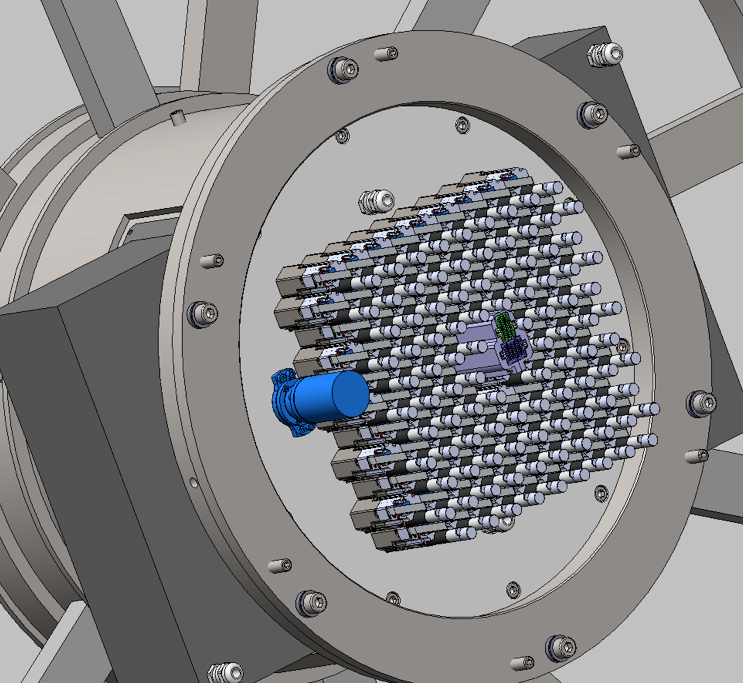
 | |
| Detail of the MEGARA focal plane showing the Small Compact Bundle (SCB; field-of-view ~8.5"x7.6") and the Large Compact Bundle (LCB; field-of-view ~12.5"x11.3") in the middle, and the actuators spanning a field-of-view of ~3.5'x3.5'. |
MEGARA
The Estallidos-GR team is involved in the development of the MEGARA instrument for the GTC telescope (at Observatorio de El Roque de los Muchachos). Jorge Iglesias acts as the IAA-CSIC representative in the MEGARA consortium, also integrated by Universidad Complutense de Madrid (UCM, Spain, host institution of the MEGARA PI), Universidad Politécnica de Madrid (UPM, Spain) and Instituto Nacional de Astrofísica, Optica y Electrónica (INAOE, México).